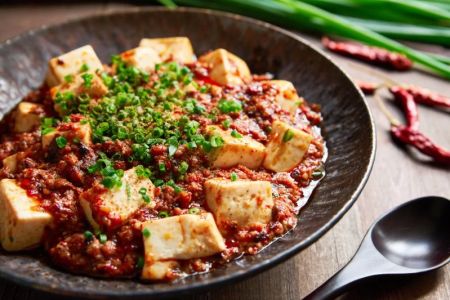- 1-Emerging-Health-Consciousness-in-Chinese-Cuisine
- 2-Integration-of-Traditional-Chinese-Medicine-and-Modern-Nutrition
- 3-Rise-of-Plant-Based-and-Vegan-Options-in-Chinese-Food
- 4-Focus-on-Low-Sodium-and-Balanced-Flavors
- 5-Technology-and-Sustainability-in-Food-Preparation
- 6-Consumer-Awareness-and-Education-Driving-Trends
1. Emerging Health-Consciousness in Chinese Cuisine
Chinese food has long been celebrated for its diverse flavors and cultural significance, but in 2025, there is a marked shift toward health-consciousness within this beloved cuisine. Consumers across the U.S. and worldwide are increasingly seeking dishes that not only delight the palate but also promote well-being. This movement aligns with broader global nutrition trends emphasizing clean eating, balanced macronutrients, and natural ingredients.
Many Chinese food establishments now prioritize fresh vegetables, lean proteins, and whole grains, steering away from overly greasy or heavy dishes. This evolving approach reflects consumer demands for meals that support energy, digestion, and longevity without sacrificing authenticity or flavor.
1.1 Case Study: Health-Focused Chinese Restaurants Leading the Way
Several new Chinese restaurants in metropolitan areas such as Los Angeles and New York have embraced this health-conscious trend by crafting menus rich in antioxidants, fiber, and plant-based proteins. These eateries often highlight sourcing organic produce and using traditional steaming techniques to preserve nutrients. Customer feedback demonstrates a growing appetite for these healthier Chinese options, indicating a lasting shift in dining preferences.
2. Integration of Traditional Chinese Medicine and Modern Nutrition
Traditional Chinese Medicine (TCM) principles have always influenced Chinese cuisine, but their integration with modern nutrition science is becoming more pronounced in 2025. Ingredients such as ginger, goji berries, and jujube are used not only for flavor but also for their health benefits, including anti-inflammatory and immune-boosting properties.
Restaurants and home cooks alike are adopting this fusion by designing menus that balance yin and yang, incorporating foods that support digestion, circulation, and mental clarity. This holistic approach offers consumers a deeper connection between food and health, making Chinese food a natural fit for wellness-oriented lifestyles.
3. Rise of Plant-Based and Vegan Options in Chinese Food
As plant-based diets continue to surge in popularity, Chinese food is evolving to accommodate vegan and vegetarian lifestyles without compromising taste. Classic dishes like mapo tofu, Buddha’s delight, and stir-fried greens are reinvented with innovative ingredients such as tofu-based “meats” and mushroom blends that mimic texture and flavor.
This shift not only meets environmental and ethical concerns but also expands the accessibility of Chinese cuisine to a broader audience. Chefs are increasingly experimenting with meat substitutes while preserving traditional seasonings, resulting in dishes that satisfy both new and longtime fans.
4. Focus on Low Sodium and Balanced Flavors
One of the biggest health challenges associated with Chinese food has been its high sodium content, often stemming from soy sauce and preserved ingredients. In 2025, there is a growing trend toward reducing sodium without losing the essence of Chinese flavors. Low-sodium soy sauces, natural flavor enhancers, and fresh herbs are used to achieve this balance.
Moreover, chefs focus on harmony in taste—balancing salty, sweet, sour, and umami notes—to create satisfying dishes that promote heart health and reduce risks associated with excessive salt intake. This nuanced approach reflects both consumer health concerns and culinary artistry.
5. Technology and Sustainability in Food Preparation
Advances in kitchen technology are playing a crucial role in the 2025 Chinese food health trends. Innovations like steam ovens, air fryers, and sous vide cooking enable restaurants and home cooks to prepare authentic dishes with less oil and more precise temperature control, preserving nutrients and enhancing flavor.
Additionally, sustainability is becoming integral to Chinese food sourcing and preparation. Restaurants are emphasizing local produce, reducing food waste, and using eco-friendly packaging. These efforts appeal to environmentally conscious consumers seeking responsible dining experiences.
6. Consumer Awareness and Education Driving Trends
The health trends surrounding Chinese food in 2025 are also fueled by growing consumer awareness and education. Nutrition labels, social media influencers, and health-focused culinary events help consumers make informed choices. Many Chinese Food enthusiasts actively seek information about ingredient origins, preparation methods, and health impacts, driving the market toward greater transparency and quality.
This trend encourages restaurants and food producers to innovate continually and align their offerings with customer values, ensuring Chinese cuisine remains both culturally relevant and health-forward.
For those interested in exploring these exciting Chinese food health trends and discovering the best places to enjoy healthy Chinese cuisine, Chinese Food offers expert guidance and recommendations to enhance your dining experience and wellness journey.







